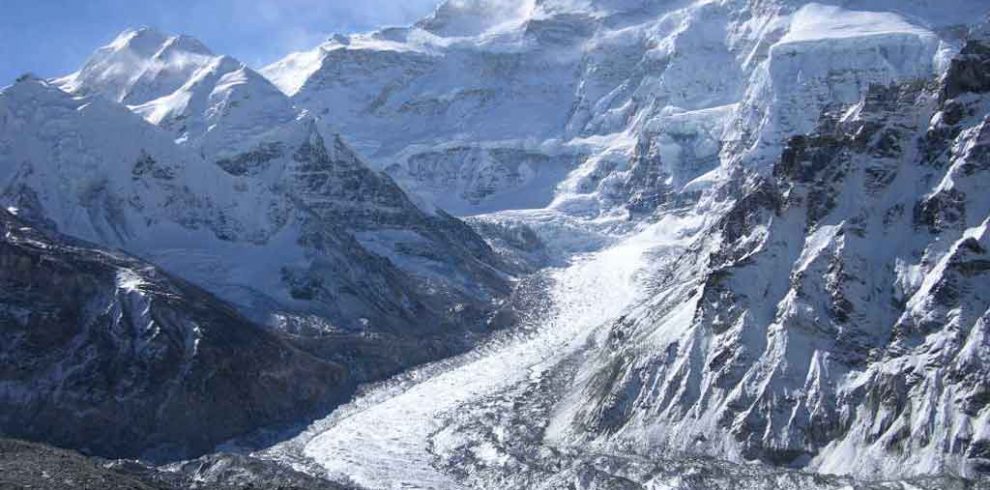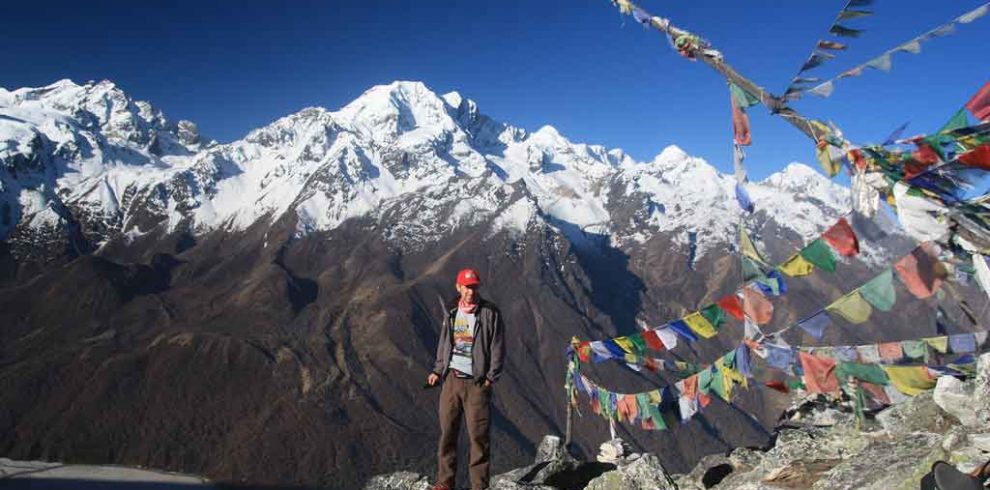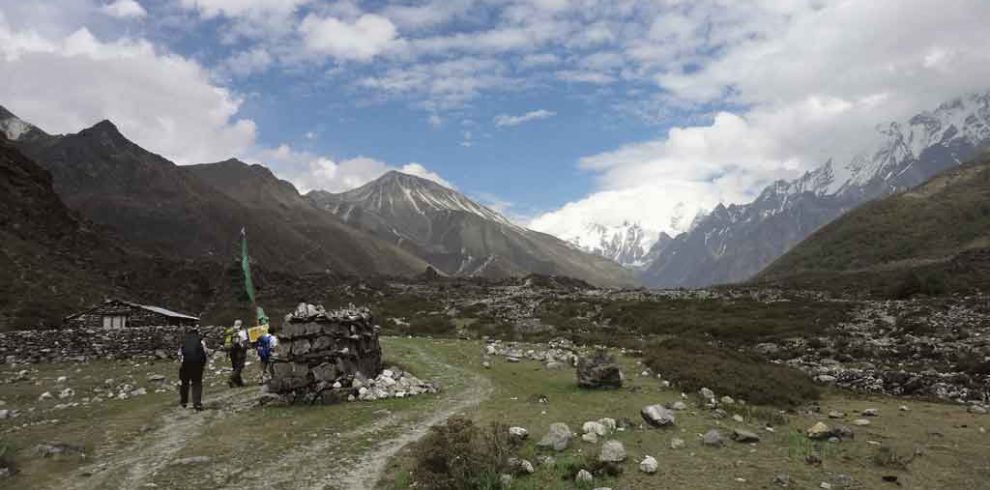Mt. Kanchenjunga (8,586m/28,169ft) is the third highest peak in the world. The Kanchenjunga Base Camp trek lies in Eastern Nepal bordering with the Indian State of Sikkim and Tibet of China. The north and south Base Camp of Kanchenjunga is perhaps one of the most remote trekking regions in the world. Kanchenjunga peak was first climbed by a British team in 1955 and opened for organized trekking groups since 1988 only.
Mount Kanchenjunga, the “Treasures of the Snow” is well-known to be the home of the legendary Yeti. Additionally, Kanchenjunga area with its unique mountain ecosystems has a consideration as a tri-national peace park with Tibet Autonomous Region (TAR) of China to the north and Sikkim of India in the east. Kanchenjunga region is a protected area in the eastern Nepal Himalayas that covers 2,035 sq. km. comprising two major peaks of Kanchenjunga.
The Government of Nepal has protected this region as a conservation park. WWF has also recognized Kanchenjunga Conservation Area Project (KCAP) as a Global Eco Region. The Himalayan animal species residing here include-red panda, black bear, musk deer, blue sheep, rhesus macaw and the elusive snow leopard. Birds including the golden-breasted fulvetta, snow cock, blood pheasant and red-billed chough are the rare species found in the area.
Likewise, the flora here is inspiring with 1,200 species of flowering plant, 69 types of orchid and 30 varieties of rhododendron. The challenging Lapsang La Pass (5,108m/16,760ft) and Sinion/Mirgin La Pass (4,650m/15,256ft) are other attractions in the Kanchenjunga region. The north face of Kanchenjunga seen from Pangpema is truly unforgettable; therefore Kanchenjunga Base Camp located at an altitude of 5,140 meters is a worthy trail to trek.
Kanchenjunga Base Camp Trek Difficulty
Kanchenjunga Base Camp trek comes in a category of hard treks. The steep ups and downs through the narrow ridges make this trek more challenging. So, trekkers need to prepare themselves for a walk of 6-7 hours daily and 7-8 hours or more while exploring Base Camps. It is also a remote Himalayan trek in the eastern region of Nepal. The mountain road journey is full of adventures and thrills.
We advise trekkers for regular exercising and jogging for some weeks prior to the trip. Any previous experience of Himalayan trekking would be an asset. Travellers with average fitness can join this trek. It is also important to consult your doctor before making a decision for this trek if you have any medical problems in the history. The facilities are basic and limited in the region and require a great patience.
Cost of Permits for Kanchenjunga Base Camp Trek (Updated 2019)
Kanchenjunga region is a regulated area. Therefore, trekkers seeking an entry into Kanchenjunga region need special trekking permits. Only the government registered local trekking companies can apply for such permits for a group of minimum TWO persons and should be managed in Kathmandu.
The permit for Kanchenjunga Circuit trek costs US $20 per person per week for the first four weeks and US $25 per person per week beyond four weeks. Likewise, all foreign trekkers should organize the Kanchenjunga Conservation Area Permit which costs Rs 3,000 (US $27) per person.
Best Time for Kanchenjunga Base Camp Trek
The best time for Kanchenjunga Base Camp trek starts from April to May in spring and begins from September to November during autumn season. Like other high Himalayan treks, winter and summer seasons are not favourable for Kanchenjunga Base Camp trek. The snow covered trails and passes remain closed at the extreme weather conditions.
Accommodations in the Kanchenjunga Region
The recent efforts of the local people in the Kanchenjunga region has made possible to operate this trek on teahouse style. However, the facilities en-route is limited and seasonal. The teahouses generally have two basic single beds. Toilets are mostly shared and can be outside of teahouses. Owners of the teahouses offer some western meals too but it is good to try the local as they can do it better and saves time.
Equipment
We will provide a comprehensive equipment list while booking this trek. Four season sleeping bag and down jacket are necessary for the trek and available to hire or purchase in Kathmandu. There is an option to leave the excess items not necessary for the trek with the hotel in Kathmandu. It is good to leave a pair of clean clothes so that you can wear them after the trek.
Change of Itinerary
We plan to follow the itinerary as printed but it may be necessary to make some changes as a result of flight schedule, climatic conditions, limitations of infrastructure or other operational factors. As a consequence, the order or location of overnight stops and the duration of the day may vary from those outlined. So, we request your patience and understanding in the events that are beyond our control. This can also affect on the total cost and duration of the Kanchenjunga trek as a whole.
Overview
<ul>
<li>Scenic mountain flight between Kathmandu and Bhadrapur (Jhapa)</li>
<li>Spectacular view of Mt. Kanchenjunga (8,586m/28,170ft)</li>
<li>WWF recognized Global Eco Region</li>
<li>Home of Red Panda and other endangered species</li>
<li>The challenging Lapsang La Pass (5,108m/16,760ft)</li>
<li>Impressive vegetation along the trail</li>
<li>A tri-national (Nepal-India-China) peace park</li>
</ul>







